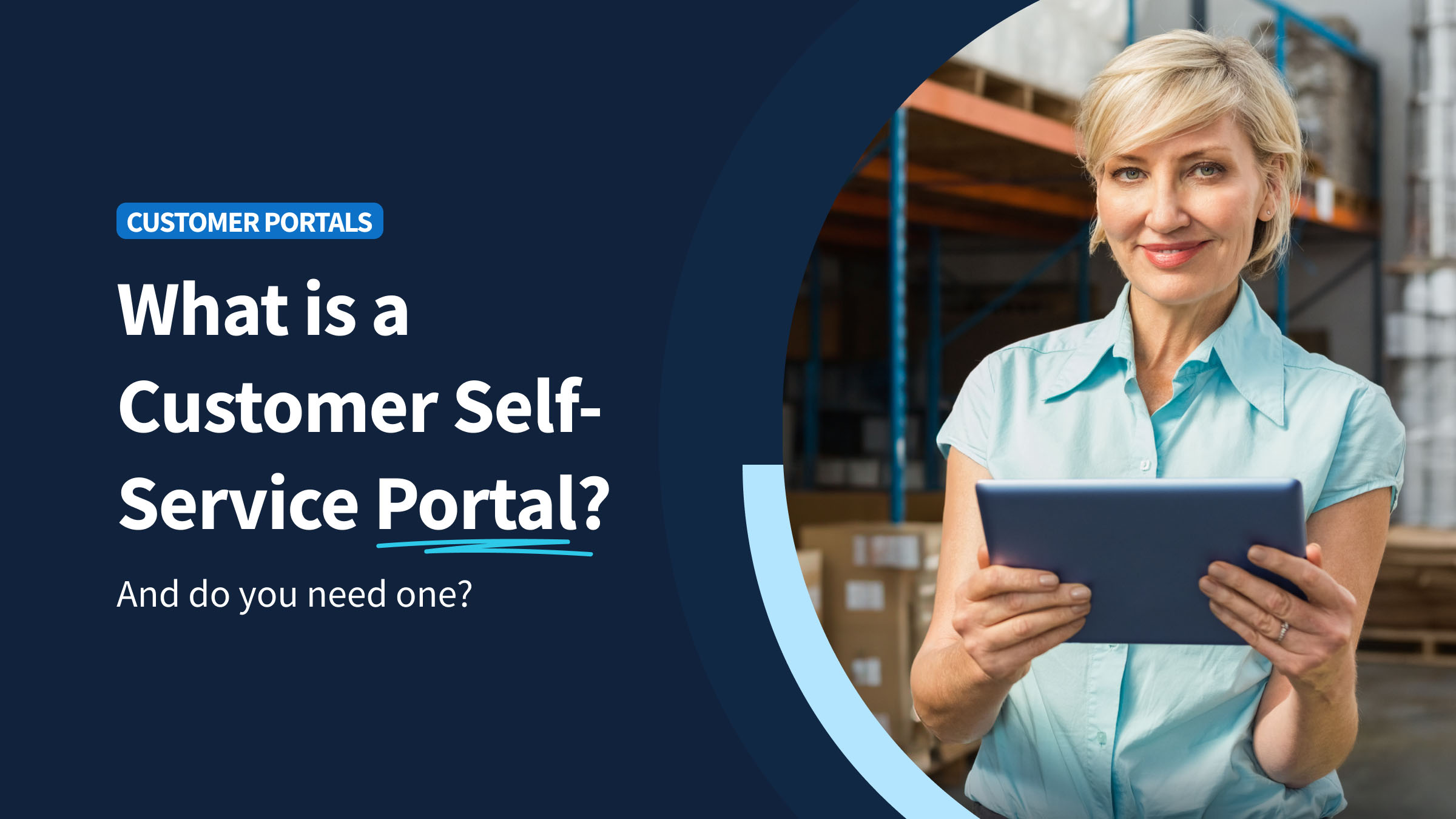Your service and support team—which, let’s face it, might be just you and one other person—spends hours every week answering the same questions and chasing down unpaid invoices. You know there must be a better way.
If you’ve ever wondered how you can streamline your support function while still delivering a great user experience for your customers, we’ve got the answer: Launch a customer self-service portal.
Read on to find out more about what exactly a customer self-service portal is, the key features that make it effective, and how you can set one up – especially if you need it to sync up with QuickBooks. We’ll explain how a customer self-service portal can transform your customers’ experience and free up your valuable time – a true win-win.
(And, in case you’re wondering what makes Method the expert: Method is a QuickBooks-integrated CRM platform that provides a portal out-of-the-box, tailored for small business. We’ve helped tens of thousands of users set up and use custom-branded portals with our customer service portal software.)
In this article:
- Customer self-service portal defined
- Do you need a customer portal?
- Key features to consider
- How to set one up
- Improving your customer experience
Whether you’re new to the concept or looking to enhance your existing customer portal, you’ll find actionable insights here. Consider this your small business guide to launching a customer self-service portal.
Definition of a customer self-service portal
A self-service portal is exactly what it sounds like: a secure web page where your customers can help themselves – whether it’s easy access to support resources and tools like FAQs and knowledge base articles, checking on an order or support ticket, or even paying a bill. It’s available 24/7, delivering instant customer satisfaction and giving you fewer fires to fight.
It’s typically part of a company’s service toolkit, often linked to their CRM or helpdesk.
Imagine, for instance, instead of calling to ask for a shipping update, a customer could log in and see the message ‘in transit – expected delivery July 5’ on their portal. No call needed. Easier for the customer— and the bonus is your team is freed up to focus on other things.
How to tell if you need a self-serve portal
Running a small business is a challenge. If you neglect your customers and stretch your teams too thin, that challenge will only grow.
A self-service portal may be right for you if you answer “yes” to even one of these questions:
- Are your customers waiting too long for answers, even to common questions, leading to frustration and lower customer satisfaction?
Long response times can drive customers away or damage your reputation. - Have you experienced lost revenue opportunities because of lack of customer satisfaction?
Poor customer experiences reduce repeat business, referrals, and overall customer lifetime value. - Are your support teams overwhelmed with repetitive customer interactions?
Troubleshooting or other basic issues can clog up the queue, wasting time and resources that your small team could spend on more complex or high-value problems. - Do you offer limited support hours, creating gaps in service agent availability?
Customers in other time zones or outside business hours may be left waiting, causing missed opportunities and dissatisfaction. - Are you finding that simple customer requests are eating up too much of your team’s time?
Tasks like updating contact info or retrieving invoices result in unnecessary back-and-forth and administrative overhead for your support team. - Is your small business trying (and not fully succeeding) to convey professionalism and modern service expectations?
If you’re not providing self-service features, or are unable to respond to support requests in real time, you may be appearing outdated or unprepared for today’s customer expectations.
Still not sure? You can find even more insights into why your small business needs a customer self-service portal here.
Key features of a great customer self-service portal for your small business
Not all portals are created equal. The most effective customer portals for small businesses like yours include certain key features and functionality—offering a range of self-service options to improve the customer experience.
QuickBooks-linked invoice access and online payments
Instead of emailing an invoice, then simply crossing your fingers and hoping the client mails you a payment or calls with a credit card, you just upload the invoice to the portal. Even better, the invoice can appear automatically if you’re using Method+QuickBooks.
With a portal linked to QuickBooks, your customer can log in at midnight, see the new invoice, and pay it right then and there—and you’ll see the payment reflected in QuickBooks instantly.
Account access and personal info
Customers can log in securely to see their profile and update their address or contact info whenever they need to. And, any changes they make are reflected automatically in your database so there’s no need for you to re-type anything and no phone tag—saving time and streamlining the whole process.
Here’s an example: If a customer updates their phone number through the Method portal, it automatically updates in your Method CRM and syncs to QuickBooks, so the records stay current effortlessly. Customers don’t even need to remember another password: Method’s portal uses secure email links and single sign-on.
Submit and track support tickets or cases
Customer self-service support – support provided via self-serve resources rather than through live agents—streamlines the whole customer experience. Rather than sending an email or calling about an issue, the customer fills out a support request form, which they can then track. This is a big upgrade from a generic contact form because the customer can see if their issue is open, in progress, or resolved, and even read responses.
If you were using Method’s case management functionality, for instance, and a customer submitted a support ticket through the portal, it would be immediately visible to your support agent in the CRM. The support agent can then update its status – which the customer can check anytime.
This level of user-friendly transparency reduces confusion and follow-up emails, much more effectively meeting customer needs.
View orders, quotes, and approve documents
With sales and service workflow automation, you can post quotes, estimates or proposals for the customer to review and approve digitally. No more printing, signing, scanning, and chasing customers to sign quotes – the customer just clicks ‘Accept’ or ‘Approve,’ speeding up deal sign-off. Your customer can also log in to see if their order is in progress, or shipping, and they don’t have to call your team.
Consider how this functionality has helped HealthLinc Medical Equipment: The medical equipment dealer, based in British Columbia, Canada, uses Method for equipment tracking, order processing, and customer management. This includes a customized customer portal, which acts as an online form for hospitals and therapists to order equipment—replacing handwritten faxed requisitions. “We’re killing multiple birds with one stone through this point-and-click customer portal,” says HealthLinc’s president of operations Cameron Fleming.. “It’s huge for both sides—it’s a win-win.”
Other nice-to-have functionality
- File downloads and uploads: Customers can download resources from across your knowledge base, such as FAQs, user manuals, templates, fixes for common issues, and personalized documents, or upload forms and files securely.
- Mobile accessibility: Your customers can take the self-service experience on the road with them so they can access customer support, FAQs, tutorials, or even their own customer data on the go.
- Custom branding: The portal feels like a cohesive extension of your business so your customers know it’s you—including your company name, brand colors and voice.
- Security features: Set the permissions you want. For instance, you could allow a customer to see a dashboard with their invoices and support tickets, but not their full account balance.
How to set up a customer self-service portal
So, a self-service customer portal sounds like it could really streamline your customer interactions, help your support team, and deliver a better customer experience, right? But how exactly do you get started?
It’s easier than you might think. With Method, your customer self-service portal is largely out-of-the-box. It’s as simple as toggling on portal access for your contacts and choosing what they can see.
You can incorporate your own branding—upload your logo, choose colors—and you can choose from Method’s various features, such as Cases and Payments features, to further customize your portal’s functionality. You can also set the security permissions to the level that suits your needs.
Not a coder? No problem. While programming your own customer self-service portal from scratch requires advanced IT skills and resources, Method’s portal is code-free for the user – any heavy lifting can be handled by Method’s team or partners. With Method, you tell us how you want your portal to work, and our team helps make it happen – from branding to adding custom fields your business needs.
Tips to drive customer adoption of your portal
Once you set up a customer self-service platform, here are some best practices to get people using it.
- Tell them it’s there: Send an announcement email explaining the portal benefits—and focus on how convenient it is for them.
- Make it super easy to access: Put a clear “Customer Portal” button on your homepage.
- Train them: Offer a short tutorial video showing how to log in and where to find things.
- Seed it with valuable info: Make sure customers can easily find something useful when they visit the portal, like past invoices and frequently asked questions.
- Encourage portal use in your workflows: Train your team to redirect customers to the portal. And add a line in your support agent auto-response to say: “You can find instant answers and resources in our self-service portal.”
- Keep it updated: Include new FAQs and keep content current (and remove outdated notices).
- Reward usage: Offer incentives—for example, give customers a small discount on early payment if they download their invoice from the self-serve portal. Or simply thank them for using it.
Improve your customer experience (and your own peace of mind)
Faster customer service, higher satisfaction, reduced support workload, 24/7 service without 24/7 staff, elimination of back-and-forth for simple tasks, and professionalism and polish: what small business wouldn’t want all that?
A customer self-service portal isn’t just a ‘nice-to-have’ in this day and age – it’s quickly becoming essential for businesses that want to scale their service without scaling their headaches.
By giving your customers a self-service experience so they can help themselves – whether it’s paying a bill, checking an order, getting customer support, or finding an answer to a frequently asked question in your knowledge base – you’re improving their customer experience and reclaiming precious hours for your team.
If you’re using QuickBooks and wondering how to get started with a portal, Method:CRM has you covered. Our CRM tailored for QuickBooks users comes with a built-in, customizable customer portal. Start a free trial and see how it works with your own data.
Get customer experience portals with your free trial of Method CRM.





